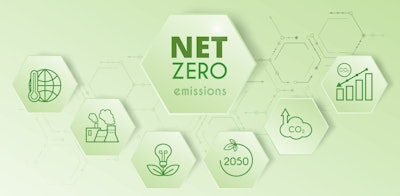
Over the past decade, sustainability has evolved from an independent but at times isolated function, with a strong focus on regulation, compliance and reporting, to a business horizontal, permeating across all corporate functions. This strategic shift has brought about the consideration of sustainability factors across the entire value chain, from risk forecasting and eco-innovation in product development to marketing that leverages the "green premium,” as well as procurement that fulfills these upstream ambitions.
As sustainability continues to cement itself within the heart of corporate business strategy where it is starting to be seen as a value lever, thinking about it as a business vertical no longer works. Within traditional sustainability teams there exists neither the breadth of skills, resources or networks of influence that will allow organizations to truly adapt for success, at the speed required.
The bottom line is that sustainable procurement is becoming more than a nice phrase – it’s defining a real need to deliver measurable ESG outcomes throughout the supply chain. Without this change, there will be no way for organizations in 2025 and beyond to be truly compliant or competitive.
The Lessons of 2024
Given continuing macroeconomic and geopolitical uncertainty (including global conflicts, trade tensions, and political upheaval), rigorous procurement and supply chain management is more important than ever. In 2024, its adoption across the value chain has been rapidly increasing. In this environment, accepting incumbent products, suppliers and supply chain processes as the status quo is unlikely to be good business. Organizations are asking for more data, greater transparency, and a greater array of options. Near-term 2030 global commitments – let alone more ambitious Net Zero targets – simply cannot be met without fundamental supply chain change, activated and led by procurement teams.
What this means for procurement professionals is that the demands placed upon them, which until now have been whispered or inferred, are being more actively voiced. Companies are either just waking up to the fact and scrambling to adjust or – in the best-case scenario – are empowering their procurement teams with funding and a commitment of resources to allow them to play an essential role.
What’s Next
While some organizations, including high profile companies, have recently dialed back their climate commitments, especially regarding Net Zero, this reflects more a growing realization of the challenge ahead and what is achievable than a rejection of sustainability principles. In fact, this cohort of companies includes several mature, early adopters who truly understand the scale and complexity of change required.
But what more do we see in the run-up to a fast-approaching 2030? Here are the six key trends to watch:
- Sustainability Integration: Sustainability teams and reporting lines will establish a growing presence within procurement, reporting into the CPO. Sustainable Procurement (aka Responsible Sourcing or Sustainable Supply Chains) will be the leading activity tower within corporate sustainability strategies. Notable examples include Unilever and Roche.
- Innovation and Disruption: Supply chains will continue to experience disruptions and organizations may need to quickly pivot based on emerging, must-have ‘green’ technology and materials. Similarly, established businesses may have to rapidly adapt, establishing new supply chains, to compete with more innovative startups.
- Greater, and Merging, Legislation: Governments will continue to react to growing public awareness and shifting opinion and look for new ways to mitigate the climate crisis and the multitude of other degradations that ESG seeks to address.
- Sustainable Procurement as Business as Usual: We will begin to see Sustainable Procurement as the new normal, rather than separate or enhanced process. Moreover, the next generation of procurement professionals will be increasingly literate in data, processes and delivery techniques.
- Carbon Commerciality: GHG emissions will increasingly become a £/$/€ consideration. Carbon pricing will be adopted, CBAM will trigger greater carbon quantification and the use of credits. Countries may also leverage carbon as a tool for masking global trade tensions, especially from high-emitting low-cost countries.
- Longer-termism: Procurement is often tactical, aligning to plans that are no longer than 12 months ahead. But this does not work in a sustainability context, so we will start to see procurement teams adopting longer-term planning as the only way to transition embedded supply chains to a “new normal.”
Many who have been following the progress of sustainability or sustainable procurement for years have had to moderate their expectations regarding the pace of change, but there is no doubt that the direction of change has been borne out by global events. A tipping point is rapidly approaching, where the escalating costs of inaction will be overshadowed by the clear benefits of sustainable practices. As the costs of inaction increase and continue to outweigh of the benefits of action, this trend will only accelerate further.
Sustainability will only succeed when it is perceived as not just the right thing to do, but also the best thing to do. This is the paradigm that we are quickly moving towards in 2025, and it may be just in time to meet 2030 commitments.
















![Pros To Know 2026 [color]](https://img.sdcexec.com/mindful/acbm/workspaces/default/uploads/2025/08/prostoknow-2026-color.mduFvhpgMk.png?ar=16%3A9&auto=format%2Ccompress&bg=fff&fill-color=fff&fit=fill&h=135&q=70&w=240)